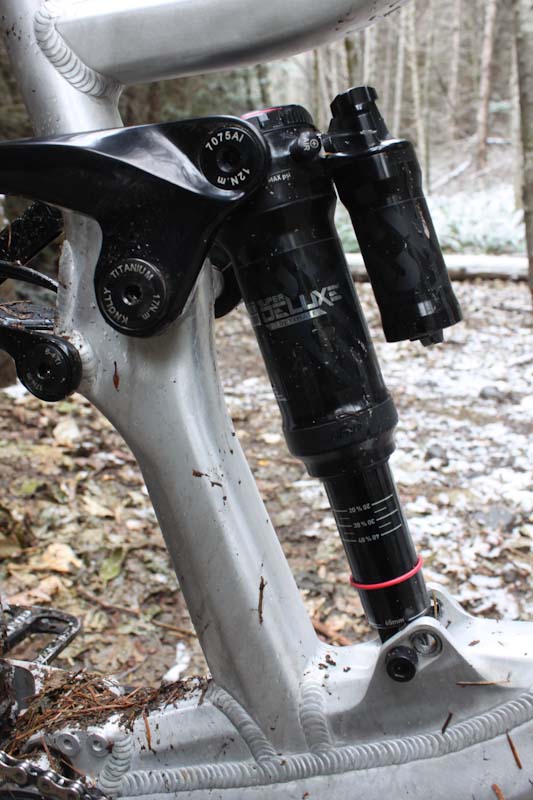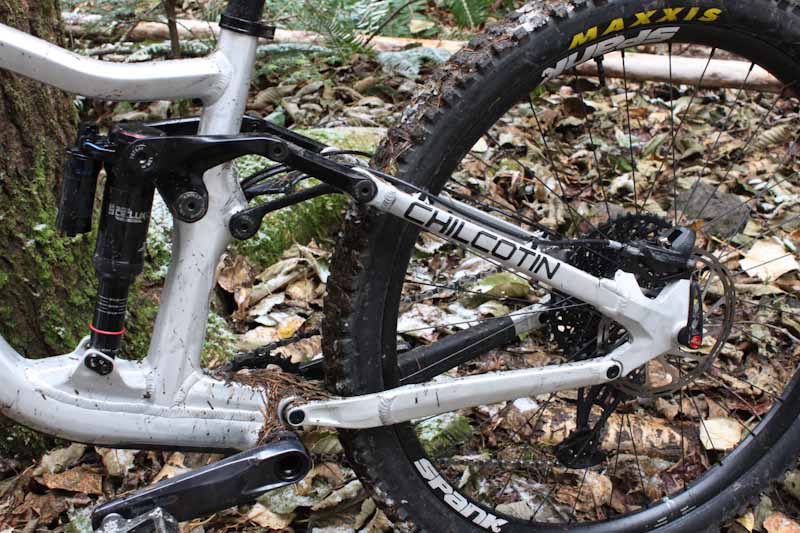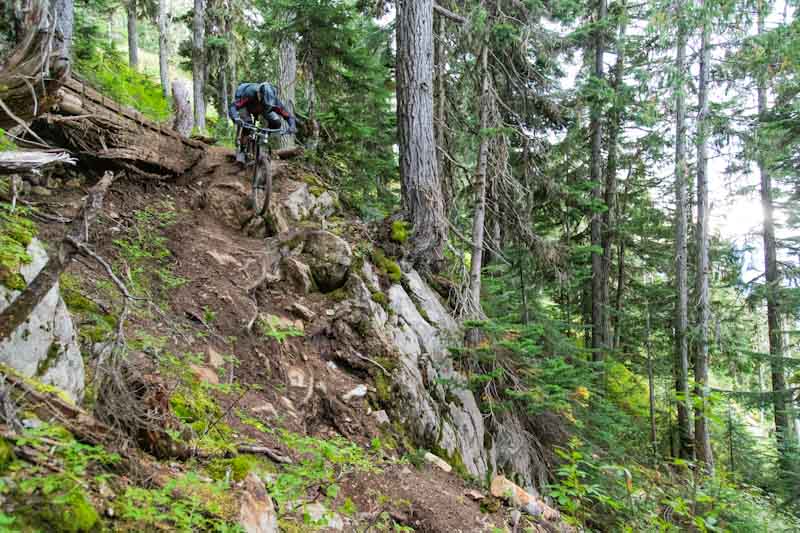A few weeks ago I was invited to ride something new from Knolly Bikes, which turned out to be their updated Chilcotin. Now a long-travel enduro 29er, I was stoked to give it a whirl as the technical terrain in my area of B.C. is well suited to such bikes.
I met up with Knolly’s enduro racer and social media man Daniel Shaw for a ride on the new Chilcotin 167. We pedaled some singletrack and road climbs, and descended a great mix of fast, rough and jumpy terrain. Within a few hours, the Chilcotin 167 had become my favorite Knolly to date. I’m a fan of 29” wheels for one, but the new Chilcotin’s geometry clinched it for me. The bike fit me really well, offered a near-perfect rider weight balance, and felt very stable at speed.
Be sure to check out my launch article covering all the specs and details of the Chilcotin 167 (and the shorter travel Chilcotin 151). Keep reading this post to see how the longer travel version handled on the trails.
Knolly Chilcotin setup:
 I should note the bike I was riding does not have the exact parts spec customers will see on stock Chilcotin builds, so I’ve kept this initial review focused on the frame’s suspension performance and geometry.
I should note the bike I was riding does not have the exact parts spec customers will see on stock Chilcotin builds, so I’ve kept this initial review focused on the frame’s suspension performance and geometry.
Setting up the Chilcotin was easy. Knolly’s Fourby4 linkage does not require adjusted shock pressures, so I stuck with my usual ‘just below factory recommendations’ for the RockShox Super Deluxe Ultimate rear shock. I set rebound at my typical three-quarters to the fast side, gave it a few clicks of low speed compression and the bike was just about dialed.
Given that I only had a few hours with the bike, I rode the Chilcotin 167 in its slack position. Moving the shock to neutral position steepens the head and seat tube angles by less than a degree, slightly lengthens the chainstays and most noticeably lifts the BB by 9mm’s. By my experience with previous Knolly bikes, I can say lifting the BB does help on the uphills as it leans you in a slightly more aggressive climbing position. I found the Chilcotin climbed really well in slack mode anyways, and quickly decided I’d happily keep the bike in that mode for anything short of a backcountry trip.
Climbing:
Even in slack position, I found the new Chilcotin’s frame geometry extremely well balanced for climbing. I never had to lean my weight backwards to maintain rear wheel traction, and at the same time I hardly ever felt the need to stand up and crank. Even on steep uphills, just a slight lean kept my body weight in a well-centered position and my front wheel planted. For 99% of the climb, I felt like the best place for me to be was in the saddle.
The Chilcotin is an efficient pedaler, and it’s only helped by its 29” wheels. I climbed a proper singletrack trail with the rear shock wide open and never felt like flipping the switch to stiffen it up. Knolly’s bikes do a great job of keeping your rear wheel stuck to the trail, and with the shock left open you’ll get a ride that’s supportive to pedaling efforts but very forgiving to trail inputs. I think bikes with sensitive linkages like Knolly’s have benefited greatly from 29” wheels, as you can enjoy their ride comfort and traction while the wheels’ momentum helps the bike roll efficiently.
The Super Deluxe Ultimate rear shock on my demo bike has a very stiff climb mode, which is great for climbing roads, buff trails, or if you’re all about efficiency and don’t mind a rougher ride on singletrack. On any bike that climbs well with its rear shock open, I like when the shock offers a stiffer pedaling platform as it increases the bike’s overall abilities: You can firm things up greatly and fly over smooth surfaces, but on bumpy trails you can climb wide open without giving up much efficiency. The Chilcotin is a bike that doesn’t rely on the shock’s switch to pedal well, it just gives you the option of a softer or firmer ride.
Descending:
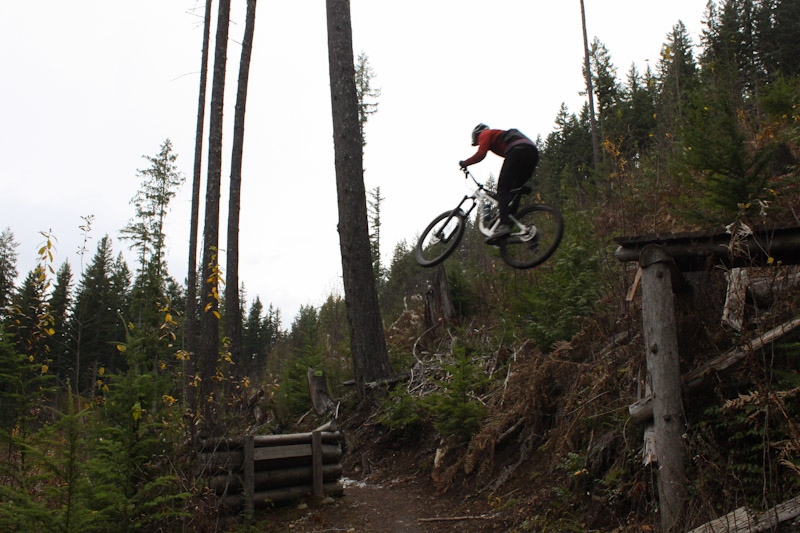
The Chilcotin’s near-perfect geometry balance shines on the downhills as well as the climbs. At a somewhat lanky 5’9” I don’t think the medium Chilcotin 167 could fit me much better. Bombing down the trail, I always felt really well centered between the wheels. The medium frame’s reach felt great at 464mm’s, and while I was happy with a spacer under the stem Knolly keeps their front ends low so riders can achieve aggressive stances.
While it’s definitely a big bike, I’m glad the Chilcotin’s front end is a bit shorter than the Warden LT I rode this spring. The Warden’s massive 475mm reach (size medium!) made that bike super stable, but the Chilcotin’s more reasonable reach keeps it feeling a bit easier to whip around.
The new Chilcotin’s slacked-out steering is great; after riding a few beastly enduro 29er’s recently, I’ve come to find there is little sacrifice in either their generous suspension travel or downhill-friendly head tube angles. I have no issues climbing through tight switchbacks with a slack, long wheelbase bike like the Chilcotin, and that kind of geo makes descending tons of fun.
I’m starting to appreciate longer rear ends, as the stability they provide feels great when you’re moving fast. The Chilcotin 167’s 438mm chainstays (in slack) are long enough to give this bike a proper enduro rig feel, but it’s still not too hard to wheelie through whoops. The Chilcotin’s BB is pretty low (in slack), and the bike’s lengthy wheelbase makes for a very stable ride. Its low-slung frame and ability to host long-travel dropper posts makes it easy to tuck into DH position when you’re descending steep stuff.
Knolly’s suspension linkage offers a well-rounded blend of ride characteristics. They’ve done a great job of offering a soft initial stroke that provides excellent climbing traction and small-bump compliance on chattery trails. But what they’ve done really well is isolating trail inputs from rider inputs: The rear wheel is always happy to use its travel when you hit anything from small bumps to big, sharp hits, yet Knolly is able to keep the bikes feeling jumpy and playful with great mid-stroke support. I always find their bikes pop well off bumps and hold you up in the corners enough to spring out of berms.
When it comes to big-hit absorption the Chilcotin’s 167mm’s of travel helps it thunder through rough stuff quite capably. Knolly’s linkage doesn’t give you that plowy, trail-numbing feeling some bikes provide so you’re always in tune with what’s on the trail below, but the Chilcotin will willfully dive into its travel when your wheel meets an impact.
Knolly’s linkage is highly responsive, which translates into excellent traction as the rear tire stays planted to rock gardens, rootbeds and chunky slabs better than most. I’m also happy to say the Fourby4 linkage doesn’t have too much inherent ramp up, so at 145lbs I can achieve full travel without any internal shock tuning.
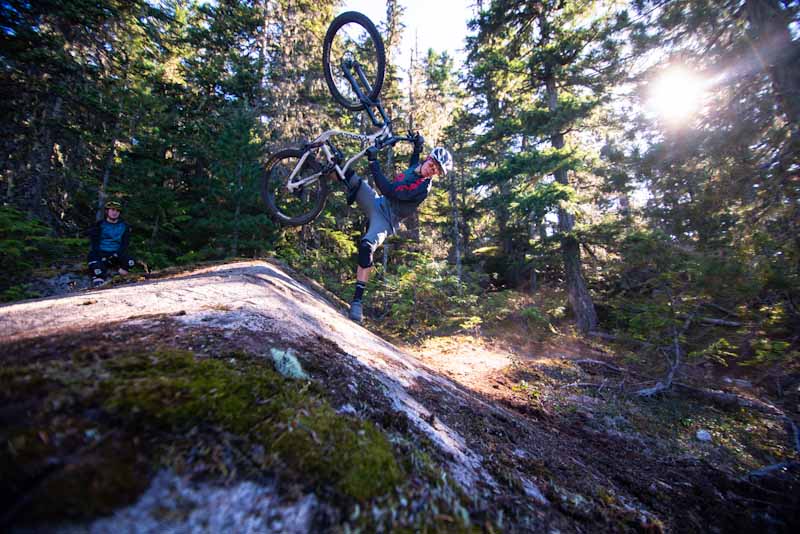
The new Chilcotin 167 strikes a balance that I really enjoy: It offers a lot of efficiency, stability and traction from its 29” wheels, but Knolly didn’t get excessive with the frame sizing. All around the Chilcotin is big but not huge, so it rides great at full tilt but remains fairly easy to handle on tighter trails. With those big wheels, dialed geometry and Knolly’s finely tuned suspension the Chilcotin 167 is one fun, highly capable enduro bike.



